Connecting the Dots with Robert Oppenheimer
by Andy Thompson, MSDC Secretary
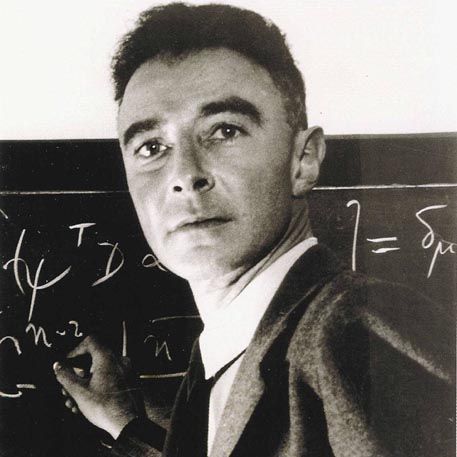
This article was originally submitted to Mineral News for publication in October 2020. The Friends of Mineralogy (a national club) recognized this as the "2020 Best Article" published in Mineral News: The Mineral Collector's Newsletter. It has been resubmitted to MSDC for publication in this newsletter.
Can you remember yourself as a young child, enjoying the paper-and-pencil game of connecting the dots? If so, here is a quasi-mineralogical version of that game. Each of our dots is a mini-story from the edges of the history of minerals. As a picture emerges, it may tickle your mind and open new pathways for you to explore.
To get started, here are four “dots” for you to think about and come up with possible ways of connecting them:
1) Robert Oppenheimer’s favorite site for collecting minerals;
2) Grandfather Joachim, the patron saint of Czech miners;
3) the origin of the name for the world’s most popular currency; and
4) the mineral source for Marie Curie’s two Nobel Prizes.
If you immediately associated radioactivity with two of the above dots, of course you are on the right path. But let’s begin by providing a context for these connections, specifically some history of European silver mining.
The Oldest Continually Operated Silver Mine in Europe
Here are some hints. Where is the oldest continually operated silver mine in Europe? The present-day town of Jachymov, on the western Czech border with Germany, was the site of silver mines discovered in 1516.
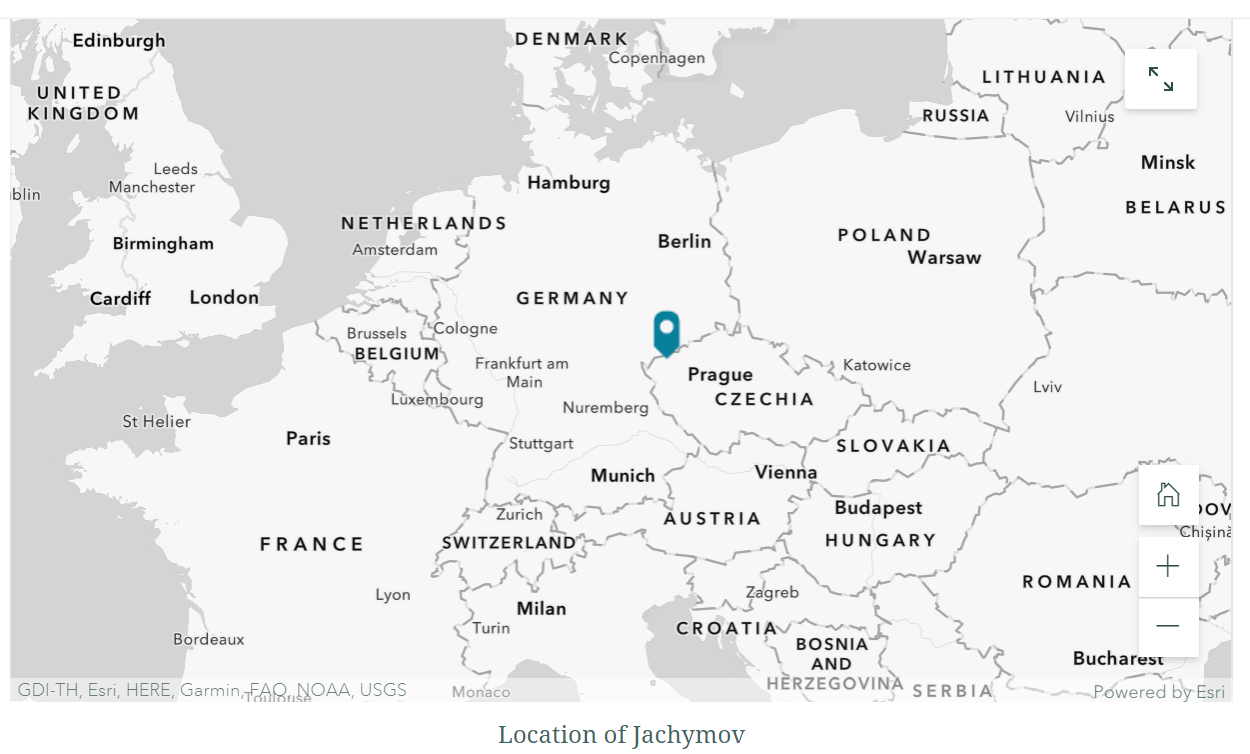
Because of the ore’s purity and abundance, the ruling count was able not only to mint the coins for his realm, but also to flood all of Europe with over 12 million locally minted silver coins. Very early on, the image of Saint Joachim replaced the count’s image on each of the coins. It became the most prevalent currency across the continent.
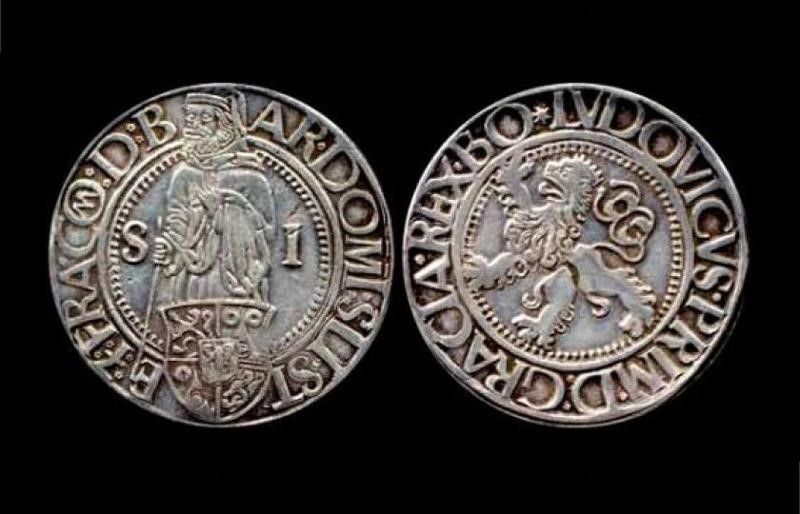
Over the subsequent centuries the local mining of silver greatly diminished, but its presence had persisted at least up to 1964. Over those three centuries, the Svornost mine in Jachymov had continued to yield important metals, from the early 16th to the mid-19th centuries. Up until that time, it could arguably claim to be one of Europe’s oldest continually operating silver mines. When the silver veins diminished, pitchblende became the primary focus for excavation. In recent decades, the Svornost mine has been primarily known for providing local spas with its radon-laden water. Over 100 different mineral species have been recorded from the Svornost Mine, and 18 of them are type locality occurrences!
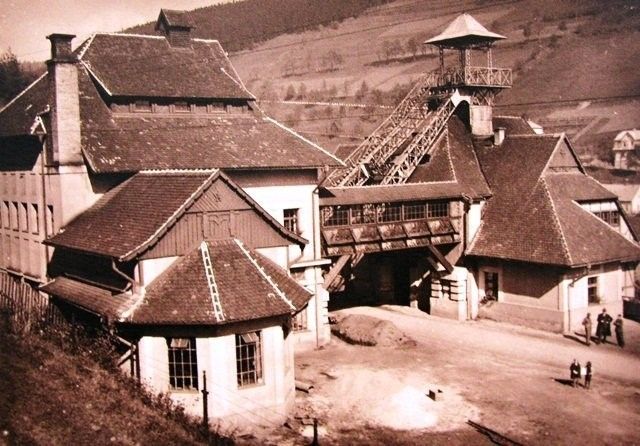
In the early 1500’s the original silver deposit was so rich that the tiny Jachymov population swelled with over 8,000 miners and their families. They dug hundreds of smaller mines but the oldest and largest has been the Svornost, which is the Czech word for “Concord” or “Harmony.” About 1525, a dispute arose between two mining organizations over mineral rights. By 1530, the issue was settled and the disputants renamed the mine to celebrate that agreement.
The boom town was then known by its German name, Joachimsthaler. It became the second largest “city” in the Czech region, second only to Prague, and was an outpost of the Austro-Hungarian Empire. The local count named the coins after the town and then people abbreviated the name to its ending, “thaler” (meaning valley). As the coins spread across Europe, their name further morphed to “thal” and later to “tal.”
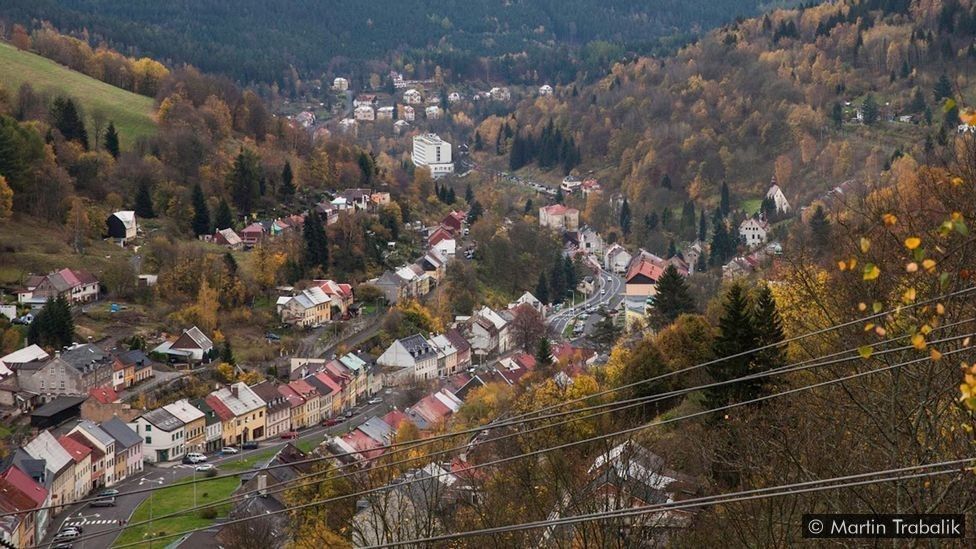
The Origin of the "Dollar"
The silver mines were so productive, they had provided enough silver to mint over 12 million large, high quality thalers by the end of the 16th century. The Dutch, a dominant maritime power in international trade in the early 1600s, brought their version of “tal” coins to the Dutch American colony, New Netherland. The seat of its colonial government was located at the southern tip of Manhattan and was known as New Amsterdam. After half a century of Dutch rule and three sea battles, the British finally defeated the Dutch in 1674, overtook that new-world colony, and renamed it New York.
Over time, the colonial currency’s name, tal, experienced a shift of the “T” to “D” and so the silver coin became known as the “dal” and then the “dollar.” Over the next three centuries, the U.S. currency, the dollar, became the most widely held currency throughout the world. And it all began with the Jachymov-Joachimsthaler silver coin.
Our second dot clarifies how the town and mining region was given its name. Its Czech and German names have the same meaning, namely, Joachim’s Valley. The name Joachim has religious roots and special significance in the Eastern European, Byzantine Christian communities. That strong religious tradition, supported by non-biblical, apocryphal gospels, identifies Joachim as the husband of Anne. Together they were the parents of the Mother of Jesus. Their official feast day is celebrated in the Roman Church on July 26 and in the Eastern Church on the 25th. To this day, it is not unusual in Eastern faith communities for a newly married couple to receive a gift of artwork of Anne and Joachim as the ideal married couple, model parents and grandparents.
Although Joachim is not mentioned in the Bible, the religious Orthodox tradition of the 15th century identified him as the maternal grandfather of Jesus. For this faith community, his relationship put him very close to the heavenly throne. Given the unsafe mining practices of the day, the miners needed all the help they could muster. Placing the entire valley under Joachim’s protection must have seemed like a prudent move. They further honored him as the patron saint for the town, its mines, and for all its miners.
Starting in 1516 and for at least several decades, the town’s silver mines were the world’s most productive. Gradually over the decades and centuries, the productivity of its silver mining declined. But toward the bottom of the large silver deposits the miners discovered and started extracting other, less valuable metals such as cobalt and arsenic. For at least the past century, the town of Jachymov gained a different identity due to its therapeutic hot springs and spas, rather than due to its silver mines and religious patron, Grandfather Joachim.
Robert Oppenheimer, Mineral Collector
Let’s circle back and consider the first of the four dots. Near the beginning of the 20th century, in 1904, a young man was born in New York, NY, to a non-practicing Ashkenazi Jewish family of German descent, considerable talent, and wealth. As a youth, he was an avid collector of crystals and rocks. He was also a systematic and serious student of mineralogy. His elementary and high school education was in a prestigious prep school for Harvard. In order to graduate from high school, he had to write a thesis. The topic he chose was a study of the mineral ores of the Jachymov region, where he and his family, spent summer vacation time. He collected hundreds of mineral specimens. That young man was J. Robert Oppenheimer.
In his first summer after graduating from high school, he was avidly collecting in the Jachymov region when he was struck with an illness that required his immediate return home. He arrived in the U.S. on a stretcher and with a suitcase of mineral specimens. Due to his recovery time, he missed that school year. Back on his feet the following fall, he entered Harvard, excelled in chemistry, physics, math, Greek, Latin, and poetry, and finished in three years. He then returned to Europe, focused on theoretical physics, and completed his Ph.D. He followed that with several years of post-doctoral advanced studies in several European universities and labs.
With his Ph.D. in hand and extensive research experience, he returned to the United States with excellent references. By 1928 he was teaching at Berkeley and Caltech, where he shared part of his extensive mineral collection with a fellow collector and famous future Nobel-prize awardee, Linus Pauling, who was also an assistant professor at Caltech but in the chemistry department.
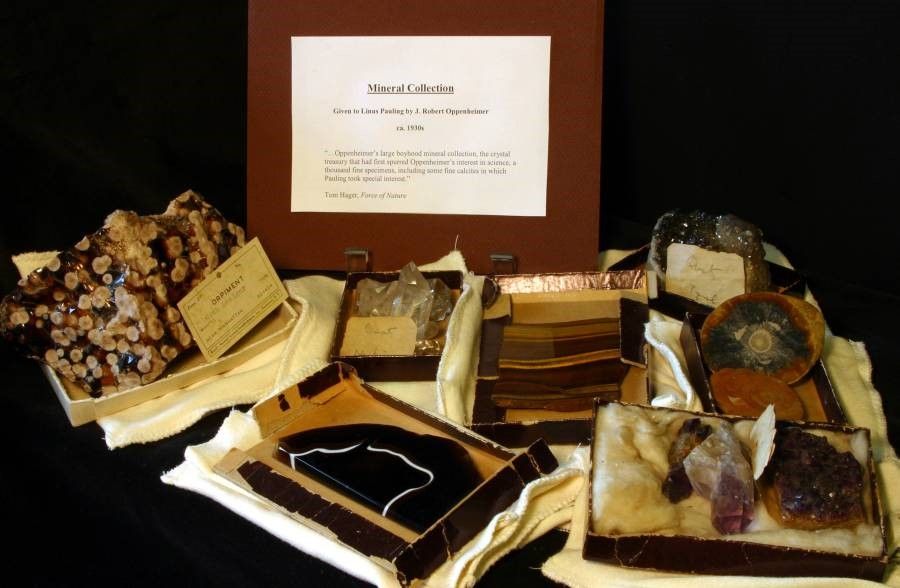
Oppenheimer was widely recognized as one of the most brilliant theoretical physicists of the day. In 1943 he became the director of the Los Alamos Lab in New Mexico, and with his team, designed the world’s first atomic bomb. For that work he has been called the “Father of the Atomic Bomb.” After the second World War he made extensive scientific contributions through his long career teaching and conducting research at the universities of Berkeley, Caltech, and Princeton. The mineral oppenheimerite is named in his honor.
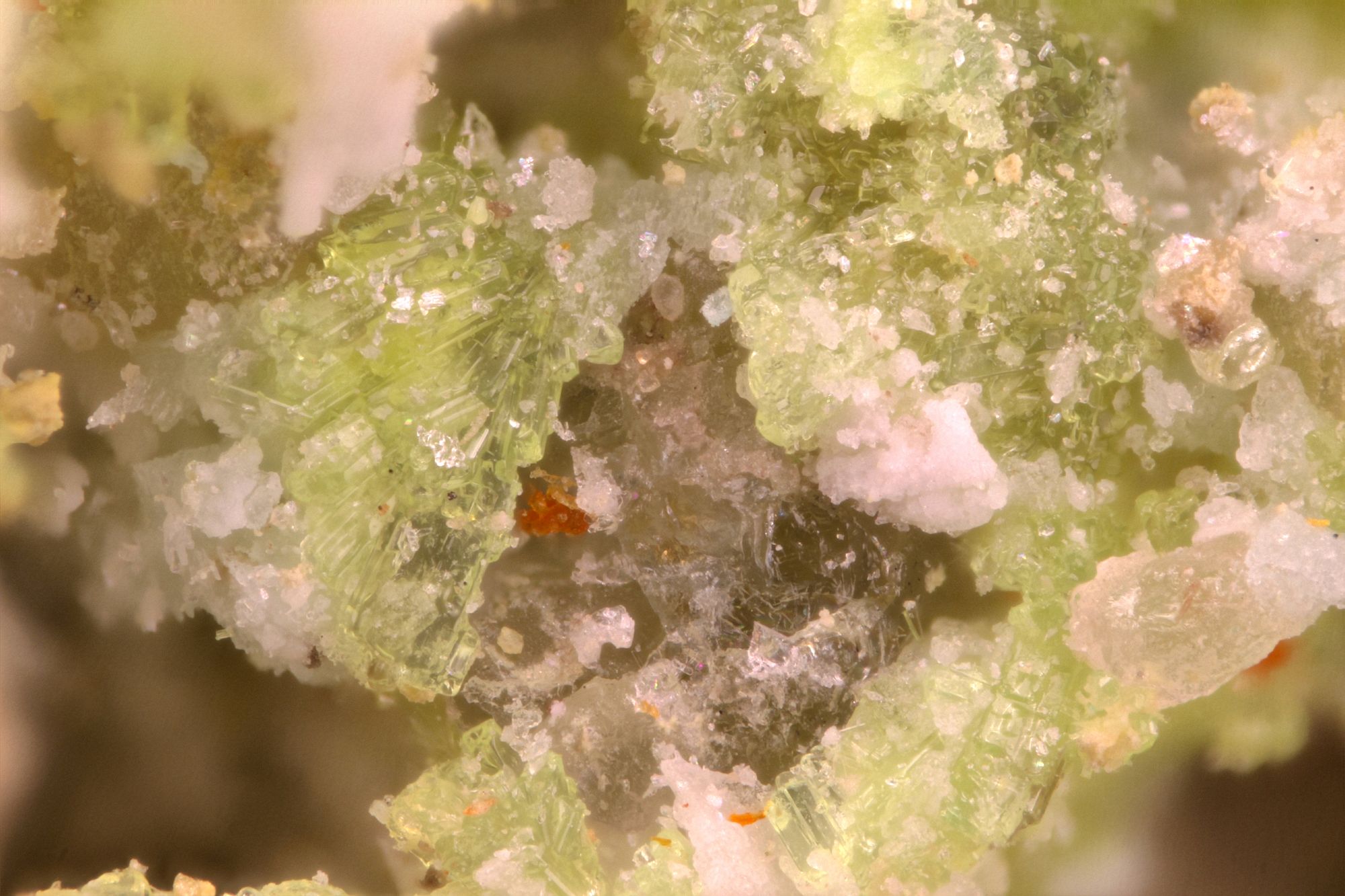
It may seem off-topic, but his interest in and extensive contributions both to science and the humanities may remind mineral collectors of another “Father” who also lived in Jachymov, namely the “Father of Mineralogy.” That gentleman, Georg Bauer, more commonly known by his Latin nom de plume, Georgius Agricola (1494-1555), wrote the first systematic text on the world’s then-known minerals, organized and based on their physical properties. Also, like Oppenheimer, he was drawn to Jachymov and he actually lived in the town for several years while collecting, researching, and systemizing minerals for his compendium. Again, similar to Oppenheimer, his family roots were in Germany and he was a humanist, scholar, and mineralogist. Pundits could not be blamed for wondering if both men benefited from drinking something magical in the Jachymov water.
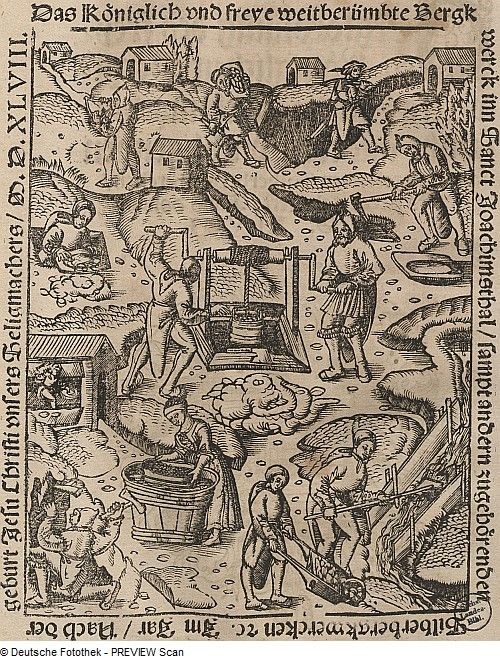
Madam Curie and the Underappreciated Mineral Pitchblende
That odd speculation does bring us to the fourth dot, and raises the question of how Marie Curie fits in with the other three dots: Oppenheimer’s mineral collecting at Jachymov, the spread of its popular silver tal coins throughout Europe, and the town miners’ identification with Joachim as their protector and naming of the town accordingly.
What links Madame Curie to the above three dots is pitchblende. At the time, its only known source was the mining region of Jachymov. When this curious blend of minerals was first noted in the late 1400s and early 1500s in the Ore mountains close to the German-Czech border, the miners saw it was not silver and so it seemed to be of no interest. As the years went by and the Jachymov silver mines were dug deeper into the valley and hillsides, the mines produced less silver but started to yield other valuable minerals. A century later and even deeper into the shafts, the miners had extracted most of the other worthwhile metals. That is when they discovered new, significant deposits of that previously underappreciated mineral they originally named pitchblende.
By 1789, the German scientist Martin Klaproth found that although pitchblende was indeed a blend of many minerals, it was largely made up of a previously undiscovered element he named uranium, after the recently discovered planet Uranus. By then, scientists had recognized how appropriate the name pitchblende was because, true to the miners’ judgment back in the early 1500s, it was indeed a blend of approximately 30 diverse elements. The first part of the name, “pitch,” was derived from the German word for “bad luck,” due to the breathing difficulties the miners associated with the ore. In hindsight, we can see it also was an omen of health issues that would emerge in later decades.
When Klaproth isolated and discovered uranium in the pitchblende, neither he nor other scientists of the day had any understanding of radioactivity, including even the fact that it existed. It would take another century before radioactivity was discovered. That happened in 1896 when Henri Becquerel experimented with uranium and discovered it emitted rays that had positive and negative charges. He realized those new rays were different from X-rays which had no charge and so their paths could not be bent in a magnetic field. Despite this breakthrough, Becquerel seemed to lose interest and did not further probe the nature of radiation emitted by the uranium. The mineral becquerelite is named in his honor.
Perhaps his lack of follow up was due to the discovery of X-rays the prior year, which captured the attention of the entire scientific community. The amazing rays became the primary focus for research as well. The new-found ability for X-rays to photograph bone structures inside the body was furthering medical science and allowing breakthroughs in life-saving surgeries.
Meanwhile, a young Polish grad student, Marie Sklodowska, was searching for an interesting topic for her Ph.D. dissertation at the Sorbonne in Paris. She learned of and started using an electrometer, newly invented by her lab instructor, Pierre Curie, to measure what she theorized were emissions or rays emanating from pitchblende, especially from uranium. She named those emissions “radioactivity.” Because of their combined work to identify this phenomenon, to reconceptualize the structure of atoms, and to prove nuclear decay does happen, the now-married Marie and Pierre Curie, along with Henri Becquerel, shared the 1903 Nobel prize for Physics. By receiving the prize, Marie became the first female Nobel recipient. Eight years later, in 1911, she was the first person ever to receive a second Nobel prize, this time in Chemistry, for her work in discovering radium and polonium. The minerals slodowskite, cuprosklodowskite, and curite are all named in honor of the Curies.
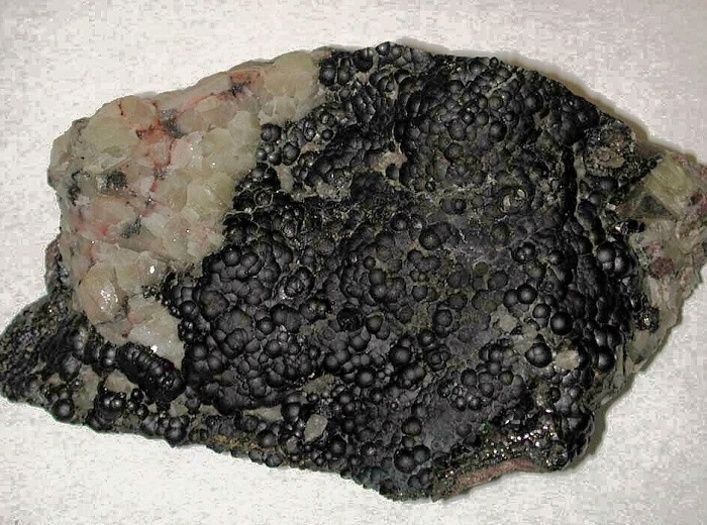
Here is how the two later discoveries came about. In working with pitchblende, the Curies knew it was mainly a uranium ore that was at least somewhat radioactive. By then, they and the scientific community also knew that pitchblende was a very complex mixture of elements. In their effort to identify and separate out those diverse elements, the Curies found that a few tiny parts of the pitchblende were far more radioactive than pitchblende’s average radiation level. That recognition inspired them to put in years of research separating out those highly radioactive trace amounts, which turned out to be radon and polonium.
During that time, Pierre had died due to a tragic street accident with a horse-drawn carriage. After several years of laborious research, Marie discovered the two new elements for which she was awarded her second Nobel prize. She chose to name the first new element radium because she appreciated that, like the recently discovered and highly celebrated X-rays, this newly discovered element also emitted what she believed were very important rays. The second element she discovered, polonium, she named in honor of her native country, Poland.
But we do have to ask: from what mine did Pierre and Marie Curie obtain their vast quantities of pitchblende? You guessed it – from the Jachymov Svornost mine, which, at the time, was the only known source for the large quantities which the Curies needed in order to separate out the relatively tiny amounts of radium, radon, and polonium with which Marie is today famously associated. That Czech mine was the same source also used by the entire scientific community, including Martin Klaproth who a century earlier had discovered uranium.
After Marie Curie received her second Nobel prize, the Jachymov miners and townspeople proudly acknowledged their link with Marie Curie by giving her name to their treasured therapeutic radon-rich spring water, located 500 meters below ground. The miners discovered the spring in 1864 at the Svornost mine’s 12th level. That spring has supplied the therapeutic waters and formed the basis for a new economic revival of the town. They named the spring after her and included in its title her Polish maiden name, “Marie Curie Sklodowska.” It is those healing spring waters that for many decades have supported the tourism for the region.
That fourth dot explains the role the central Jachymov mine and its pitchblende played in Marie Curie’s discovery of radioactivity, in her reconceptualizing heavier atoms, and further opening the door to the world of nuclear physics.
Connecting the Dots
In retrospect then, what exactly is the common thread that connects our four dots? At least one common thread is the mineral wealth of the Jachymov-Joachimsthaler region.
Dot number one is the rich diversity of the minerals of the region which drew the young J. Robert Oppenheimer to this site as he started his scientific career which later blossomed into his becoming a leading theoretical physicist and the Father of the Atomic Bomb. That same mineral abundance enticed and supported “Father” Georgius Agricola as he researched and wrote the first-ever compendium of minerals and became the Father of Mineralogy.
From the earliest days of Joachimsthaler, when the town sent its men deep underground to mine its riches, the people made Grandfather Joachim their patron saint. That second dot, naming the town after Joachim, expressed and embodied their prayer and priority for safety. Mining was literally a matter of life and death and naming their town after him proudly proclaimed their faith.
Their success in extracting the region’s extraordinary rich precious metal and their abundant minting of silver coins, initially named after their patron, constituted our third dot. That name “thaler” ultimately gave the world the nomenclature for today’s dollar.
Our fourth and final dot was that the town’s mines provided the Curies with the pitchblende they needed to help unlock the secrets of radioactivity and nuclear decay.
In connecting these four dots, we now have another way of thinking about and picturing this Jachymov mining town. Its high concentration of silver and pitchblende allowed it to broadcast and radiate its mineral wealth outward to all of Europe and the western world. Through its radioactive elements it fostered a completely new vision of the nature and structure of the atom and of nuclear energy.
Today the town has a population of about 2,500 people. Due to its therapeutic mineral baths, it most recently has been known as a tourist town. But it also carries another, more recent heritage due to the Nazi concentration camps that enslaved French prisoners of war and Czech citizens. The Nazis forced them to mine the pitchblende and support Germany’s efforts to build an atomic bomb. With Werner Heisenberg in charge of that Nazi search for a wonder weapon, the progress was too slow to compete with the American Manhattan Project.
A few years after the end of World War II, the Soviets took control of the mining operation and used enslaved German POWs, Czech dissidents, and prisoners from other dominated nations. Once again, there was nothing the Czechs could do to resist domination by this second overpowering authoritarian regime. By 1949, Stalin’s engineers had completely moved in and used their own political prisoners, numbering more than 14,000, whom they jailed in 11 concentration camps near the mine. The total domination of the Czech Republic took place when Russian tanks crushed the 1968 Prague Springtime liberalization movement.
For the citizens of Jachymov, the image of their beloved valley, town, and mines became a double-edged sword. They had to wait until the Czech Republic regained its freedom in 1989 with the collapse of the Soviet Union.
We have connected four dots with the hope of creating a new picture of a historic little mining town which, through its mineralogy, has supported scientific discoveries and influenced the cultures of the entire world. Perhaps mineral collectors will want to look at their own mineral collections and see if it is possible to imagine new ways of connecting some of their specimens, their places of origin, and their history. Have fun.
Editor's Note
The author, Andy Thompson, was president of MSDC 2004 through 2010. Earlier, he was Associate Professor of Personality and Religious Development at The Catholic University of America and National Director of the Pallotti Centers for Apostolic Development.
References:
Petr Ondrus et al. 2003. Primary minerals of the Jachymov ore district, Journal of the Czech Geological Society. 28/3--4.
Sicree, Andrew A. 2019. The Oppenheimer Minerals (a blog entry) https://paulingblog.wordpress.com/2009/11/19/the-oppenheimer-minerals/
De re Metallica, from Wikipedia. https://en.wikipedia.org/wiki/De_re_metallica
Vicery, Matthew. 2018. "A spa where patients bathe in radiactive [sic] water." https://www.bbc.com/future/article/20180306-a-spa-where-patients-bathe-in-radiactive-water
Pasachoff, Naomi. 1996. Marie Curie: And the Science of Radioactivity. Oxford University Press, USA.
Predecessor U.S. dollar minted 500 years ago in Jachymov in 2020 https://english.radio.cz/predecessor-us-dollar-minted-500-years-ago-jachymov-8111166#:~:text-Embed%20audio%20on%20your%20site&text=This%20week%20marks%20exactly%20500, West%20Bohemian%20town%20of%20J%C3%A1chymov.
Katrle, Martin. 2019. November 1. Jachymov (Joachimsthal): 500 Years of the Oldest Uranium Mining Town.
